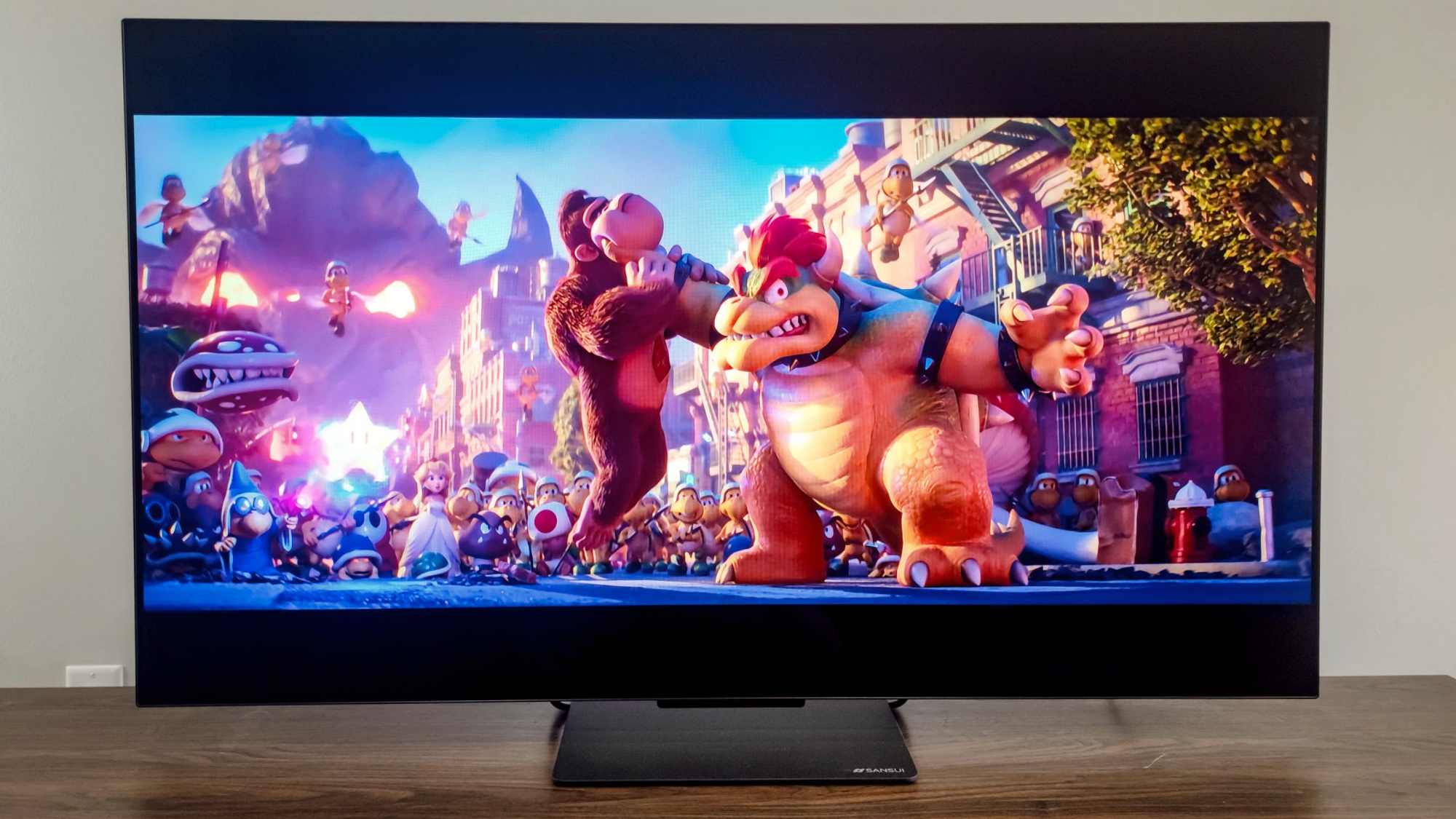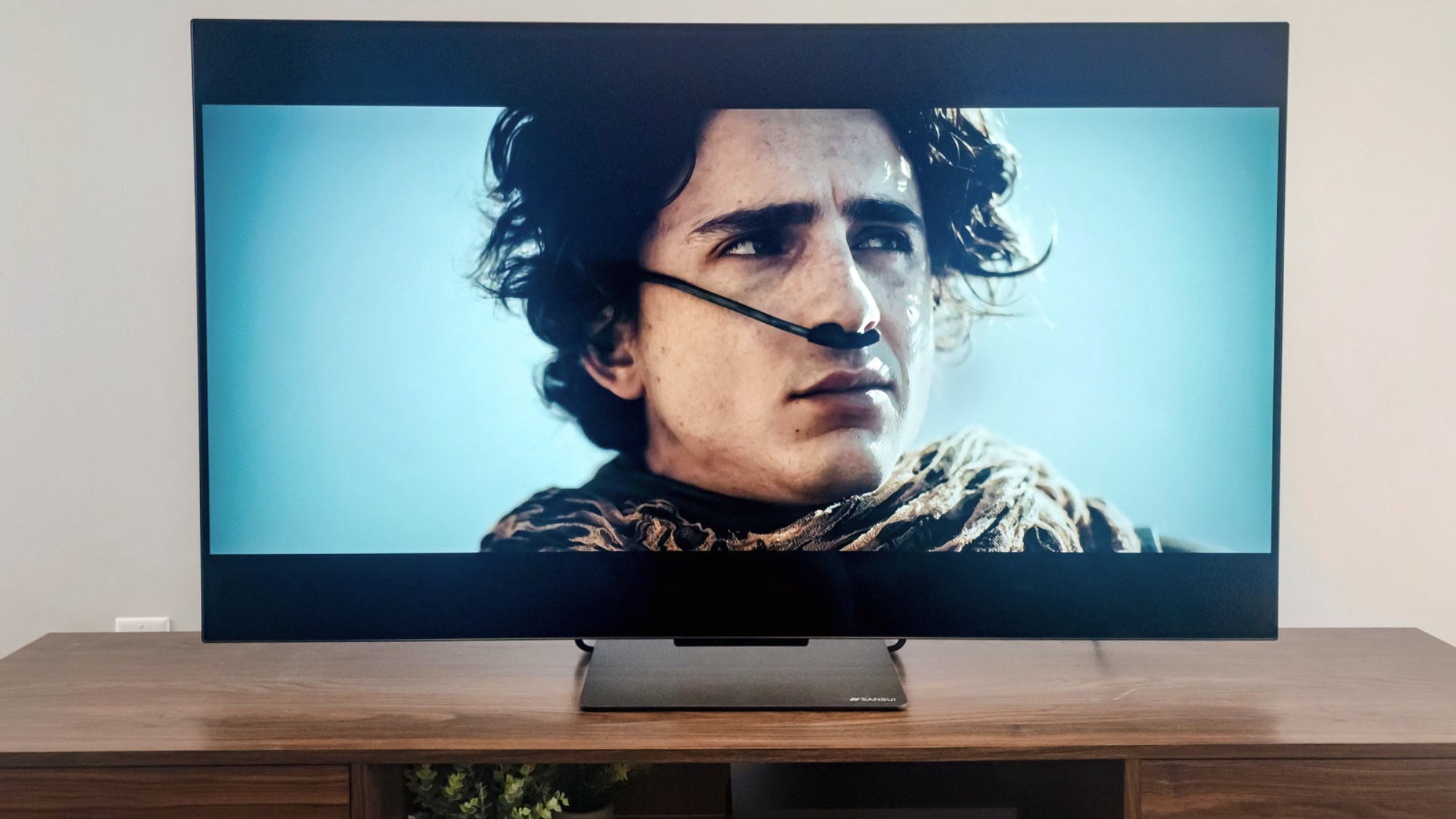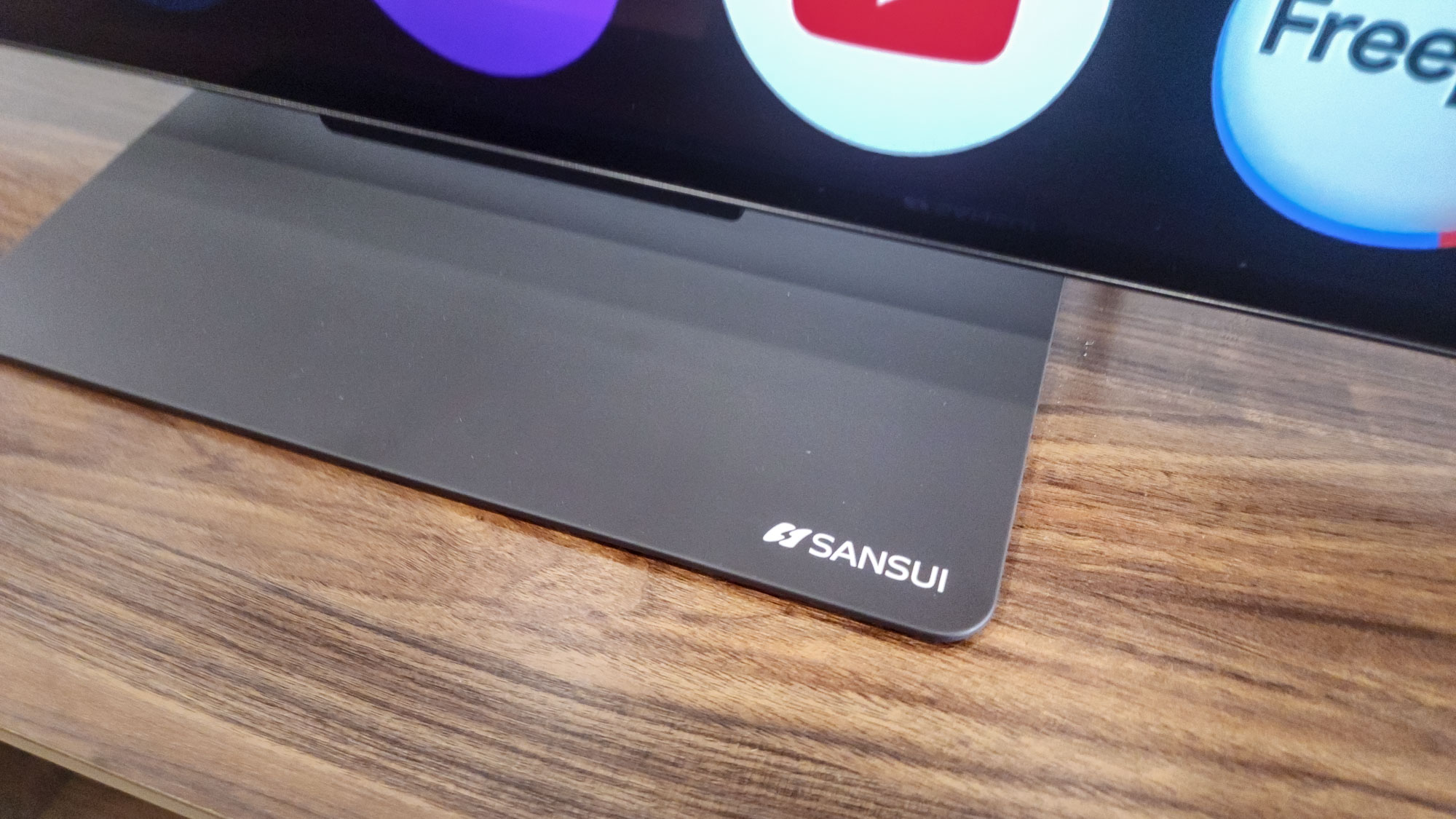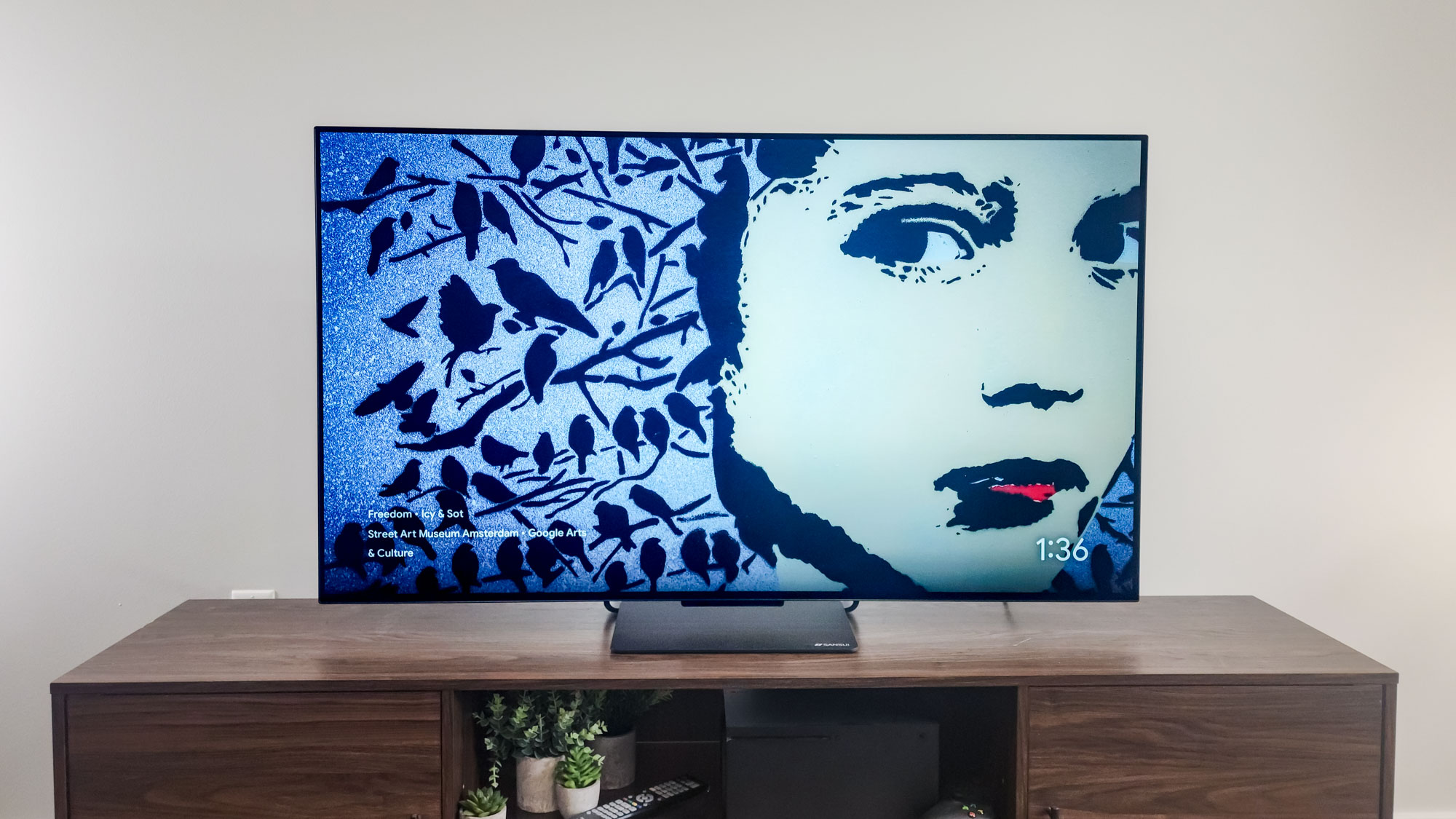
The best OLED TVs don't often come cheap. It's why we recommend Mini-LED models, like the Hisense U8N, as these will gift you the best specs at a budget price. But Sansui has, out of nowhere, entered the fold with its own OLED design that comes in at incredibly low price of just $799.
For perspective's sake, take a look at the next closest 55-inch OLED TVs: the LG B4 OLED, which starts at $1,196, and the Samsung S85D, which starts at $1,700. Of course, at the time of writing these prices are slashed to around $900 in the face of the holiday season — but don't get it twisted, OLEDs don't come cheap.
That's what makes the Sansui OLED TV such a unicorn and hard to believe. After my initial few hours with the world's cheapest OLED TV, I needed to dive a bit deeper into this budget design and see just how much you're sacrificing at this price point — not to mention on some unknown name in the industry.
As you might expect, the test results aren't the best against most offerings. At such a lower price, you'd expect there to be plenty of concessions, but what the numbers did paint for me was a picture of something far more interesting — a world with ever-cheaper OLED TVs.
Sansui 55-inch OLED TV testing data compared
I put Sansui's budget OLED design up against the best possible candidates at its price point, which include the Sony Bravia 3 LED TV and the LG B4 OLED. Do note that the Bravia 3 is an LCD screen that uses direct LED backlighting, meaning it's not OLED like its counterparts.
That being said, the Sansui 55-inch OLED's brightness still struggles to keep up even with Sony's most budget model in its 2024 TV lineup. This is a Sony model that's not even OLED or sports any major premium features. In fact, the two TVs are neck and neck, which should give you a good understanding of where the Sansui stacks in relation to the market.
While brightness on OLED TVs is often lacking, with even the B4 being quite low compared to Mini-LED models, the Sansui could eke out just a bit more in this regard, especially on the HDR front. Even last year's LG B3 OLED had a peak HDR brightness of 626 nits in a 10% window. This not only means content doesn't pop as well as it would on a more premium TV, but reflections from ambient lighting are also a major concern.

There's good news on the color gamut front. According to our testing, the Sansui OLED TV's standard content color coverage hits over 129% of the Rec709 gamut — a feat few TVs have mustered in our results.
It's still nowhere near the LG B4's exceptionally low color accuracy, though, which is measured via a Delta-E score. As you can see in the "Super Mario Bros. Movie," the colors just look off, which owes to its high Delta E score of 4.21.
I will cut the Sansui OLED some slack with its gaming prowess, as it still wowed me in certain scenarios. For instance, the PS5 Pro runs quite well on the display, but a middling 21.2ms of input latency is pretty bad — worse even than some of Sony's more premium designs, like its Bravia 9 Mini-LED TV that has an input latency of 17ms.
But one thing I will give the Sansui some credit for is in its HDR gaming workloads. It might not be the fastest TV on the block, but it definitely looks good and serviceable for modern consoles. It's Google TV interface, on the other hand, is something else entirely.

The Sansui OLED runs on its own iteration of Google TV via Android 11. This means that it's got access to all of the best streaming services and a wide array of free channels to enjoy, but it runs incredibly slowly. I get quite irritated even when turning the TV on at times, as it takes such a long time to boot up, and navigating to certain menus and changing inputs is quite a drag.
Design-wise, everything is here that you'd expect on a budget TV. I will commend Sansui on its pedestal stand, which gives its OLED more room for smaller desks and surfaces — unlike the less-forgiving legs found on most modern TV sets. It even has a cover on the back to hide its various inputs, which is kind of a neat touch — if only slightly unnecessary.
Is the Sansui 55-inch OLED worth its budget price?

This is the ultimate question, right? Is the Sansui OLED TV worth its subpar test results in the face of a budget price point? Or do the minimal performance metrics outweigh owning a sweet OLED screen?
In my mind it doesn't make sense to spend less money on a product that won't give you quality performance. While I do think it's okay on the gaming side, there's no question you could net better results on a Mini-LED TV at that same price point or on an OLED that's just a bit more expensive.
And while the Sansui OLED might be just $100 more than a PS5 Pro, you're better off sticking with a more household name like LG — not merely for its improved performance metrics but for the peace of mind it brings with extended use.
But the Sansui OLED TV does open the doorway for cheaper OLED designs to hit the market. That's why I hope Amazon and Roku are taking notes.







